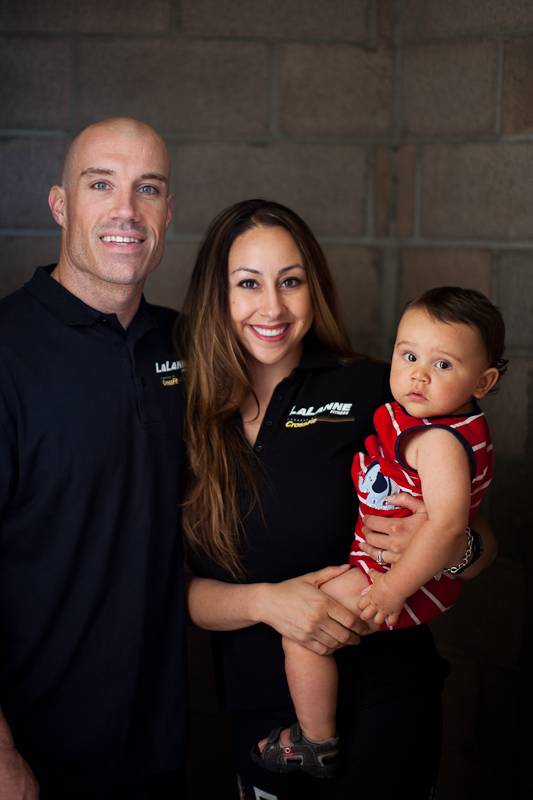Last week we talked with Chris LaLanne about how he became a coach, how he programs for his students at LaLanne Fitness, and how he carries on the family tradition established by his grand-uncle, Jack LaLanne. This week, we get more hands on with Chris, discussing the challenges of being a coach.
Chris is a CrossFit coach running a successful affiliate, but he came from a private training background. When teaching CrossFit, or any group exercise program, part of the skill in coaching is in class management, both in regards to communicating effectively with the students and also managing the space and equipment. For some private trainers segueing into coaching CrossFit, this group environment can be daunting. Explained Chris:
You’ve got to be able to manage a group of people, number one. And also communicate with individuals within the group and teach individuals while also managing a group. You know with CrossFit, teaching the mechanics of movements is number one and being able to see movement and discern from good and bad movement. Then, while workouts are happening, making corrections during that workout and all the while managing a group. It’s something that requires experience, which you cannot teach, and it’s very different from personal training.
Communicating technique to a group, especially if you have some high intensity clients, differs greatly from personal training to group instruction. One thing that occurs frequently with new trainers is they themselves understand how to do a movement, but they struggle with identifying and communicating movement faults to their clients. Sometimes it is not clear if the trainers can see the faults and just do not correct them, or if they cannot actually see the faults in their client’s movement. Chris shared his experience on this matter:
I can see that happen with some of my other coaches. You’ve got to place the mechanics and good movement over all else. And if they’re not moving right, then you need to make that a priority. It’s a safety issue, as well. We want people to be safe and successful and if you’re not moving well and the mechanics are not sound we need to stop and fix that first. That’s another aspect of coaching that’s a little tricky for some people to acquire – that ability to not be afraid to stop someone mid-workout or right in the middle of a set and say, “Hey, take a time out and don’t get carried away with the clock and getting so wrapped up in doing things as fast as possible.” You’ve got to slow down and think about quality first.
Slowing down is easier said than done for both clients and coaches. It can be easy to fall into the trap of being a timekeeper and organizer, rather than a coach, who stops, starts, fixes, and adjusts the students. “I think nowadays there is just so much emphasis placed on go, go, go, and really the competitive aspect,” said Chris. “They are placing so much emphasis on the time and the performance and the intensity through that channel that they’re losing the result and the safety from that standpoint.”
The result Chris is after is improved health and fitness for his clientele. If you follow his three weeks of programming you will see each class has a dedicated segment for strength and for conditioning. A great deal of time is spent on skill at LaLanne Fitness and they also integrate mobility work into their curriculum. For Chris, it is not just about time and hurrying through, but rather a much more holistic and studied approach.
For Chris this holistic approach is exemplified by what he considers to be both the most challenging movement to coach and also the most rewarding:
I love teaching the snatch. One of my favorites. It’s probably one of the hardest movements, but it’s fun to teach. It really is encompassing all aspects of fitness in one exercise, which for me is pretty gratifying to teach people who struggle with aspects like coordination and balance – to really help them. It’s empowering to really improve on that exercise.
 The challenges of coaching do not just show up in the classroom, but also on a personal level. As any entrepreneur knows, getting a business off the ground is a time consuming endeavor. How do you give 100% to your school, your career, and your family, and still have some left for yourself and your personal creative pursuits? Shared Chris:
The challenges of coaching do not just show up in the classroom, but also on a personal level. As any entrepreneur knows, getting a business off the ground is a time consuming endeavor. How do you give 100% to your school, your career, and your family, and still have some left for yourself and your personal creative pursuits? Shared Chris:
It’s like every day you have a given amount of work that has to be done, and X amount of phone calls and emails, and then x amount of time that you want to spend with your family, and beyond that is the things that Chris gets to do from a creative standpoint, from a, “Hey this is what I’d like to do it has nothing to do with what I need to do.” So, it’s been interesting trying to get all that in perspective.
Right now time management is my biggest challenge. It is also a little bit of a fear because how you approach very day matters. For me, with the gym and with the family, managing my time has become one of those skills that separate the multimillionaires from just getting through life.
To read more about Chris LaLanne:






